Sales teams selling services know this feeling. I hop on a call, a prospect name-drops an alternative, throws a pricing curveball, and my brain races for the right story, the right proof, the right close. A strong sales battlecard quiets the chaos. Not as a script, but as a pocket guide I can trust - built for real conversations, updated with real intel, and easy to use under pressure. Here is how I build that card, piece by piece, with clear examples I can reuse and refine for my team.
The one-page template I rely on
I use a clean, one-page layout that lives as a doc or sheet and exports to PDF without fuss. It keeps the core sections on a single screen, plus a short worksheet I can use to fill it out quickly and a simple 30/60/90-day rollout plan. No fluff - just what moves a deal forward.
What the one-pager includes:
- Positioning: one line that explains who I help and why I am different.
- Strengths: three short bullets tied to outcomes.
- Weaknesses: honest watchouts with guidance on how to handle them.
- Landmines: questions that expose competitor gaps.
- Discovery questions: five prompts that reveal value drivers fast.
- Objection responses: short talk tracks by stage.
- Proof points: quantified outcomes with source and date.
- Closing plays: two low-friction next steps.
Template notes:
- One page, scannable text. Sentence fragments are fine.
- Include "Last updated" and "Source" so reps trust the data.
- Make a printable PDF; keep the live doc or sheet updated so it stays current.
Want handy starting points? See Templates and the guide Supercharge your Sales Battlecards with ChatGPT A Game-changing guide & template - download now.
How I customize it by role and value drivers
I map sections to my ideal customer profile and each member of the buying committee. An operations leader cares about risk and change fatigue. A finance lead cares about time to payback. A technical sponsor cares about integration and support quality. That mapping lets me swap soundbites by role without rewriting the whole card.
For services value drivers, I tie messages to:
- Time-to-value: hours saved, days to go live, project milestones.
- Risk mitigation: change management coverage, security, compliance.
- ROI: cost out, revenue in, margin lift, payback window.
I give SDRs a simplified focus on discovery questions, landmines, and one strong proof point. AEs get the full card, with price framing, objection responses by stage, and closing plays. I surface the card where reps work - linked to opportunity records, tagged by industry and competitor - so it is easy to pull up live.
Example: managed cloud migration card
Scenario: a mid-market IT services firm sells managed cloud migration to a company using an incumbent with high overhead and long timelines.
- Positioning: I help mid-market IT teams move critical apps to the cloud fast, with lower risk and transparent pricing.
- Strengths: fixed-fee sprints; dedicated change management lead; 24x7 support with named engineers.
- Weaknesses: fewer offshore resources; smaller physical footprint. Guidance: emphasize faster cycles and lower rework.
- Landmines: ask about change management coverage, average time from kick-off to first milestone, and named engineer continuity.
- Discovery questions: What delays migration today? Which systems carry the biggest penalties if delayed? How do you measure success in the first 90 days?
- Objection responses: handle "We do this in-house" and "Transition risk worries us" with empathy, a reframe, and evidence.
- Proof points: example figures - migration time reduced 32% at a logistics company; rework tickets down 41%; 5.8-month payback. Include source and date.
- Closing plays: quick scope review; pilot on one app or a joint architecture session with the sponsor.
Competitor battlecards that win head-to-head
Purpose is simple: help me win head-to-head deals with clarity and confidence. I keep it short. I include "Why I win or lose," a clear "Plant a landmine" area, and the "Last updated" and "Source" fields. Recency and sourcing build trust. See a visual reference: competitor-battlecard-example.
What I include:
- Headline positioning for both sides so contrast is obvious.
- Top three strengths and weaknesses for each.
- Trap-setting questions that expose gaps without naming names.
- Price framing that explains apples-to-apples, price-to-value, and hidden costs.
- Differentiation soundbites that tie to outcomes.
- Customer logos matched to the buyer’s industry (used with permission).
- Evidence snippets with metric, source, and date.
- One- to two-line rebuttal scripts.
- Pitfalls to avoid so I do not oversell or take bait.
Example
Competitor A
- Positioning: broad full-service provider with heavy project staffing.
- Strengths: depth of services; long tenure with large enterprises; global presence.
- Weaknesses: long lead times; high change order rates; complex org for support.
- Landmine: "How will implementation time and change management be handled?"
- Price framing: higher base plus frequent change orders raises true cost.
- Rebuttal: "If predictable timelines and fewer change orders are key, my fixed-fee sprint approach is usually a better fit. Here is how it plays out over a quarter."
Micro-case (example figures)
- Problem: mid-market retailer faced a six-month backlog and 18% change order rate.
- Outcome: go live in 10 weeks; change orders under 3%; 6.1-month payback.
- Source and date: customer interview, Q2.
Competitor B
- Positioning: low-cost staff augmentation model.
- Strengths: hourly rates; flexible staffing.
- Weaknesses: limited architecture guidance; minimal change management; higher rework risk.
- Landmine: "Who owns change management and what is the rework policy?"
- Price framing: low hourly rates can mask higher total cost from rework and delays.
Objection handling by stage, done right
Objections shift by stage. I frame the top five by discovery, evaluation, and procurement. I pair each with an empathy line, a reframe, one proof point, and a crisp next step. This structure keeps the conversation human and directional. For layout inspiration, see objection-handling-battlecard-example.
Examples
-
"We do this in-house"
- Empathy: I get why you want to use your team first.
- Reframe: Many clients ask me to absorb the high-risk sprints, then hand back steady state.
- Evidence: example - three-month migration peak delivered on time; incident rate 37% lower post-handoff. Source + date noted.
- Next step: scope a two-sprint pilot that hands off to your team.
-
"No budget now"
- Empathy: Budget timing is tight for many teams.
- Reframe: Savings often land this quarter due to fewer change orders and faster cycles.
- Evidence: example - payback under six months after rework tickets fell 41%.
- Next step: pencil a phased path so month one targets the highest-payback system.
-
"Need executive buy-in"
- Empathy: Without a sponsor, good projects stall.
- Reframe: Executives respond to risk removed and time saved, not features.
- Evidence: board-level summary showing migration time cut by 32% and service credits avoided.
- Next step: build a one-page sponsor brief together.
-
"Concerns about transition risk"
- Empathy: Handing off a core system is scary.
- Reframe: Risk falls when change management is named and measured.
- Evidence: dedicated change lead, user training plan, rollback path; incident spikes drop within two weeks on average.
- Next step: review the transition playbook line by line.
-
"We tried an agency before"
- Empathy: Bad fits happen and they are painful.
- Reframe: The issue is usually scope discipline and staffing continuity, not the idea of external help.
- Evidence: named engineer model, fixed-fee sprints, rework coverage terms in writing.
- Next step: short audit of the last project to prevent deja vu.
Key talking points and story arcs
My message ties to outcomes. I build three value pillars that map to pipeline quality, lower customer acquisition cost, and risk reduction. For each pillar, I keep a 30-second version and a two-minute version; not every call gives me room. For a sample structure, see Screenshot 2023-04-25 at 3.29.06 PM.
What I include:
- One elevator pitch that names the customer, the problem, and the outcome.
- Three value pillars tied to results the buyer tracks.
- Quantified outcomes that feel real and recent (source and date).
- Social proof with logos from the buyer’s industry.
- Role-based soundbites so an economic buyer hears payback and a user hears clarity and support.
Examples
- Elevator pitch (30 seconds): I help mid-market IT teams move core apps to the cloud on a fixed-fee sprint model so you ship faster, avoid change-order surprises, and hit a clear payback in months, not years.
- Two-minute story arc: Problem, stakes, unique mechanism, proof, next step. I walk through the jammed backlog, penalties and service credits at risk, the named engineer and change management model, the 32% time reduction, and a simple pilot as a next move.
Pillars with proof (example figures)
- Faster cycles: first milestone in two weeks; full go-live in ten weeks. Based on recent projects.
- Lower total cost: change orders under 3%; rework down 41%.
- Lower risk: named engineers; 24x7 coverage; clear rollback; incident spikes drop within two weeks.
Feature comparisons that highlight impact
Comparison tables often bury the lead. I frame rows as benefits, not feature labels. I add what-it-means and impact, plus the risk if it is missing. Color-coding helps, but I keep it readable when printed. Example layout: feature-comparison-battlecard-example.
What I include:
- Criteria aligned to buyer outcomes: implementation time, support model, reporting, security posture, ROI.
- Ten rows or fewer so it is usable during live conversations.
- Clear callouts for true differentiators so eyes land on them first.
Example rows (services context)
- Launch speed: first milestone in two weeks. Impact: earlier value and fewer vendor meetings. Risk if missing: stalled backlog.
- Change management lead: yes, named resource. Impact: smoother adoption. Risk if missing: rework and user pushback.
- Fixed-fee sprints: yes. Impact: budget predictability. Risk if missing: change-order creep.
- Named engineer continuity: yes. Impact: faster resolution. Risk if missing: context loss.
- Reporting weekly with action items: yes. Impact: fewer status meetings. Risk if missing: guesswork.
- Security and compliance: documented controls. Impact: fewer audits. Risk if missing: project delays.
Callout: In B2B services, labor mix, ticket handling, and governance drive total cost and speed more than any single feature line.
Industry, account, product, and prospect variants
Vertical context changes everything, so I mirror the buyer’s language and metrics. For visuals, see industry-specific-battlecard-example, ABM Upsell Battlecard Example, product-specific-battlecard-example, and Prospect-Specific Battlecard Example for Rising Sun Productions showing overview, pain points, USP, Success stories, Objections.
Industry-specific battlecard
- Pain matrix: connect business risks to technical blockers.
- Short quantified case studies matched to the vertical.
- Integration needs and adjacent tools common in that space.
- Compliance notes with the exact acronyms auditors use.
- Seasonal triggers like Q4 freezes or budget cycles.
- Procurement quirks such as security reviews or vendor registration steps.
Healthcare example
- Pains: audit exposure; clinician downtime; patient data risk.
- Buying committee: CIO, compliance lead, security, operations; CIO typically holds budget with compliance sign-off.
- Integration: EHR, identity management, secure messaging.
- Compliance: HIPAA, HITRUST, BAAs, breach reporting windows.
- Success metrics: zero critical incidents in 90 days; audit pass; reduced service credits; time saved for clinical staff.
- Messaging: named change lead coordinates with clinical schedules; weekly risk registers; security attestation prepped for procurement.
ABM battlecard
- Executive priorities from earnings, press, or leadership updates.
- Current vendors to find seams.
- Active RFPs or pilots and their stages.
- Political map: who blocks and who sponsors.
- Signals: new hires, funding, tech stack changes, job posts.
- Tailored landmines and success metrics written in the account’s language.
Example (Fortune 1000 retail)
- Context: inventory turns slipped; exec focus on supply chain agility.
- Org map: CIO owns budget; VP of operations sponsors; security and finance review contracts.
- Live intel: hiring burst in data engineering; legacy DC contract up for renewal in six months.
- Value hypotheses: cut change orders by half; reduce time to first milestone to two weeks for order management; free 10% of engineering hours for analytics.
- Tailored stories: national retailer with 31% faster go-live on a similar stack; regional chain with seven-month payback after reducing rework.
Product-specific battlecard
- Ideal use cases: say yes or no clearly.
- Prerequisites: access, data mapping, or tooling needed.
- Pricing anchors: frame value without minutiae.
- Cross-sell triggers that feel organic and helpful.
- High-level implementation steps, not every task.
- Risks and mitigations in plain language.
Example (cloud migration)
- Core tier: single app, straightforward stack; fixed-fee sprints; named engineer; weekly reporting.
- Premium tier: multi-app programs with complex dependencies; adds change management lead, extended testing, and training.
- Upgrade positioning: when scope expands, point to greater change coverage and lower rework. If speed and predictability matter, it is a natural move.
Prospect-specific battlecard
- Role, industry, and tech stack to tune soundbites.
- Last interactions: call notes and email themes.
- Likely objections by role and stage.
- Context snippets from discovery.
- Next best action that does not feel pushy.
Example (mid-funnel, tech lead in manufacturing)
- Role: director of IT operations; cares about uptime and ticket load.
- Recent activity: opened risk-focused emails; asked about rollback steps.
- Objections: transition risk; change fatigue across shifts.
- Talk track: named engineer continuity; shift-based training windows; rollback paths tested before cutover.
- Next best action: short architecture review with their plant systems lead and my named engineer.
Thought leadership inserts that open doors
I give reps teachable insights without pitching. I pull a few stats from credible sources, add a short point of view, and attach a smart question that moves into discovery. I keep links safe to share and refresh quarterly. For a simple format, see the industry news Battlecard example.
What I include:
- Three to five fresh stats with sources and dates.
- Executive insight lines that show I understand the pressure.
- One contrarian take that is still safe.
- Prompts that lead to discovery.
- A bridge from insight to a question that opens the next step.
- Quarterly refresh so it stays timely.
Examples
- Stat: 42% of mid-market firms expect higher incident risk during migration peaks this year. Question: how are you insulating your team during the next peak?
- Stat: 58% of IT leaders say change-order rates hurt budget predictability. Question: what has helped you keep change orders down?
- Insight: a short go-live with a narrow slice reduces noise and speeds buy-in. Prompt: which app would prove value the fastest without huge risk?
- Refresh cadence: update stats at the start of each quarter; retire lines that no longer feel timely.
Operationalizing and keeping cards fresh
I launch without a big production. I start by auditing what the team already uses, rework what is useful, and archive the rest. Then I build the first set: the core one-pager, a competitor card, and the objection matrix. I pilot with three reps who run three real calls each, then gather call snippets. A weekly review gives feedback that matters. I move the cards into the systems reps already use so they show up during prep and live calls. I assign clear ownership and a refresh rhythm: competitive items monthly; thought leadership quarterly; everything else gets a quick monthly review.
For enablement depth, I add printable PDFs for ride-alongs, short in-app snippets for quick copy or paste, a brief walkthrough video to show how to use the cards during a call, and a coaching guide for managers who run role-play. Small, consistent wins build trust. A solid sales battlecard becomes a living tool, not a file no one opens. When reps feel prepared, I hear it in their voice - and I see it in the numbers.
To keep intelligence fresh automatically, explore KOMPYTE GPT. To measure impact and iterate, read Measuring and Improving the ROI of Sales Battlecards. For additional resources, check the Sales Toolkit.

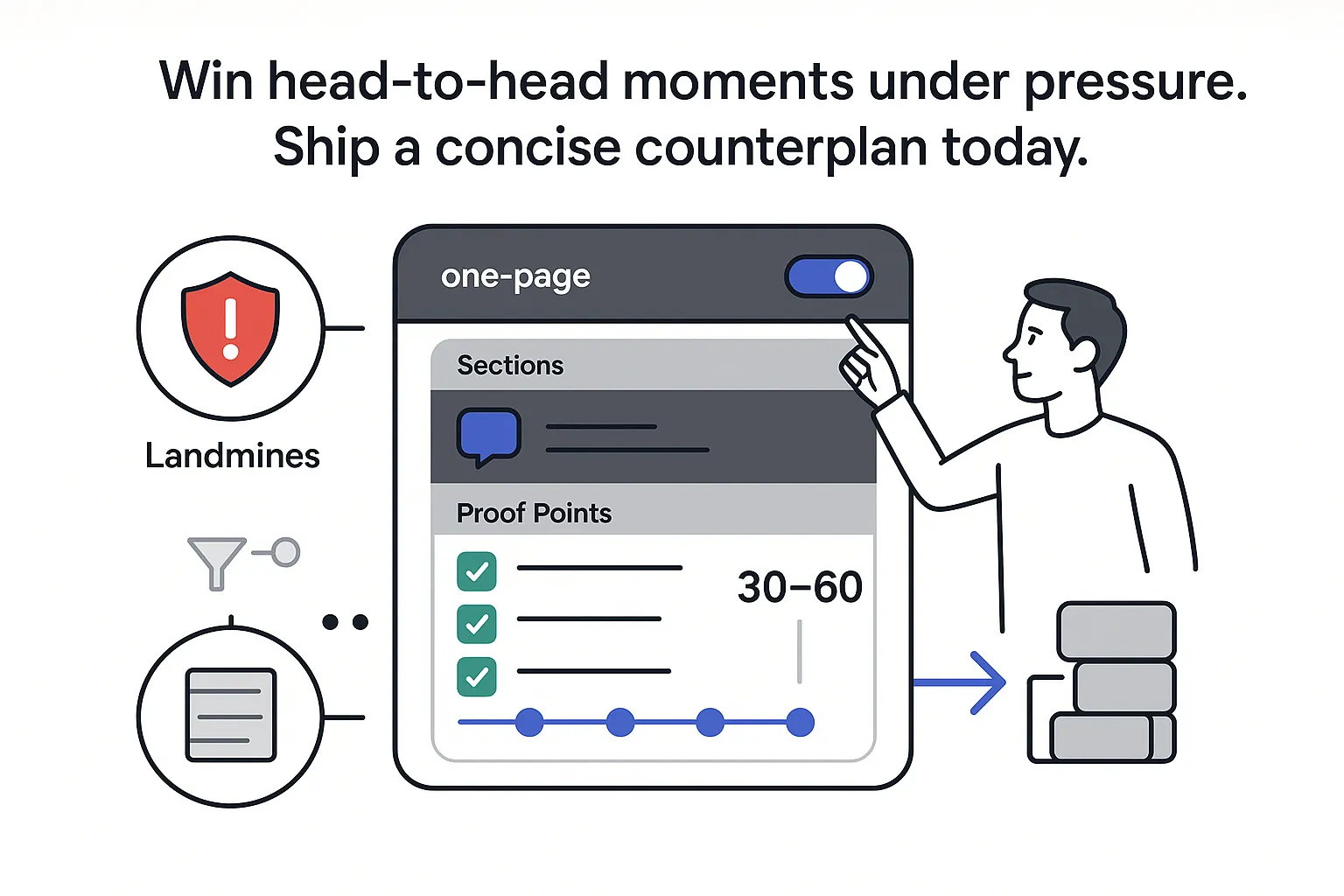

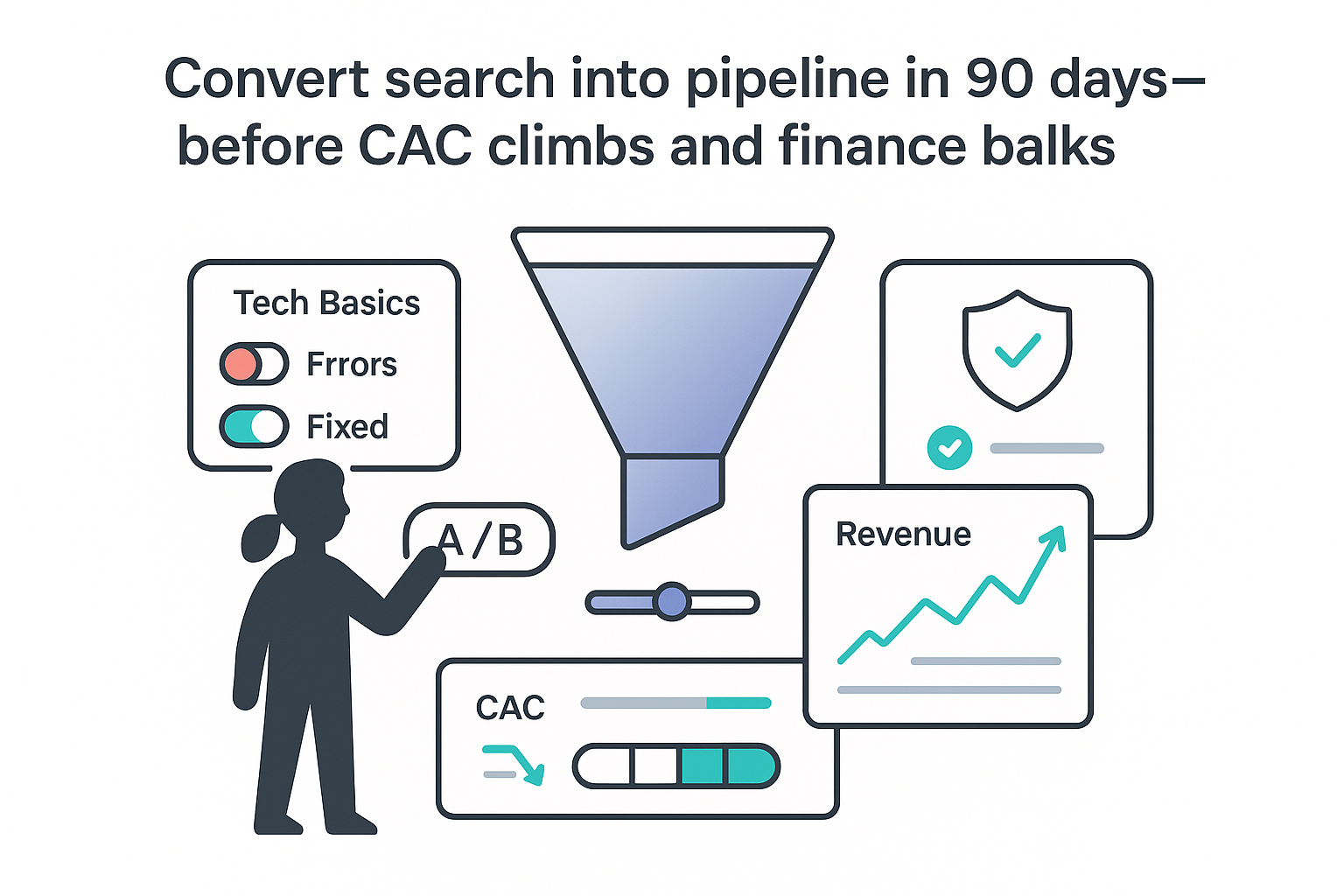
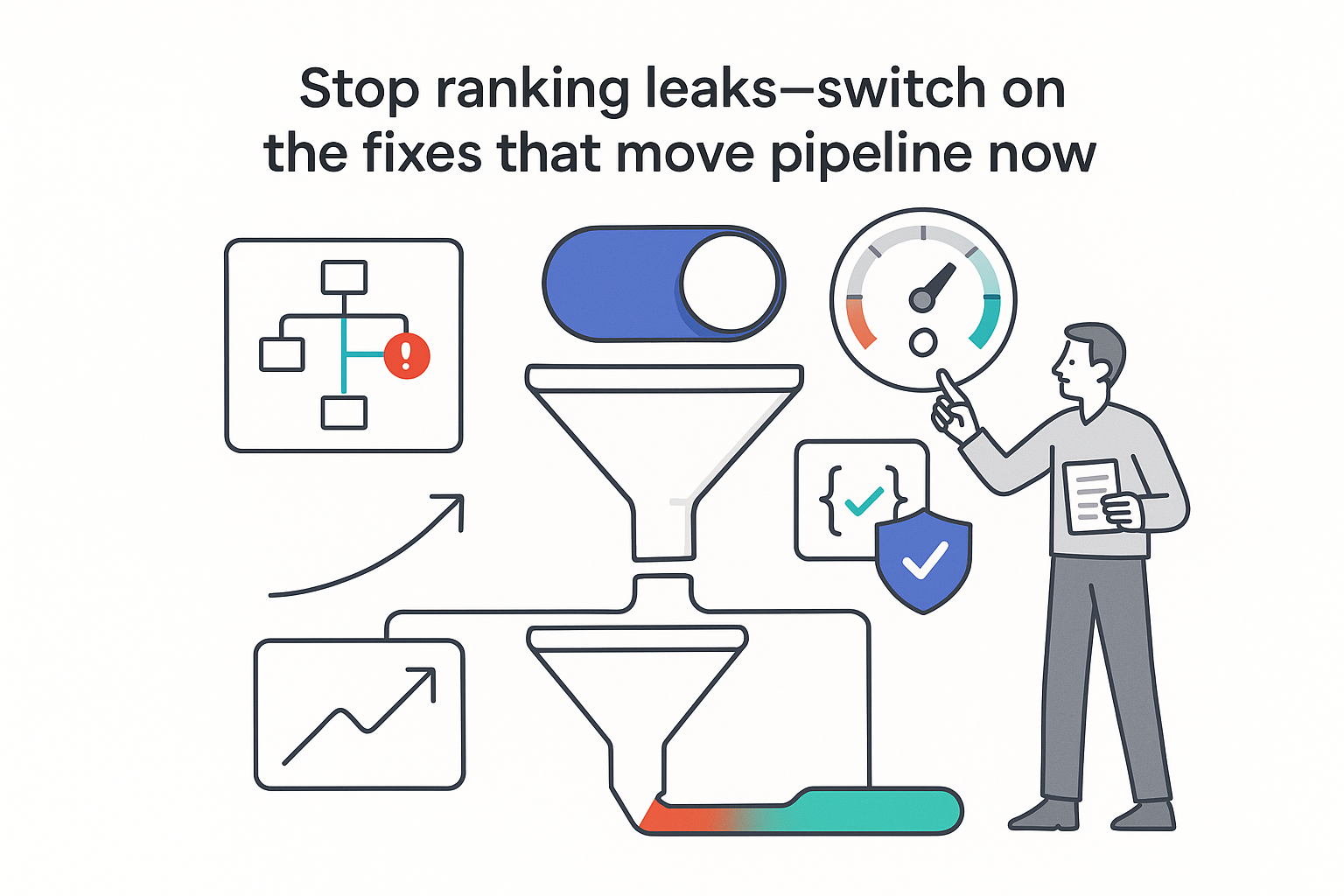
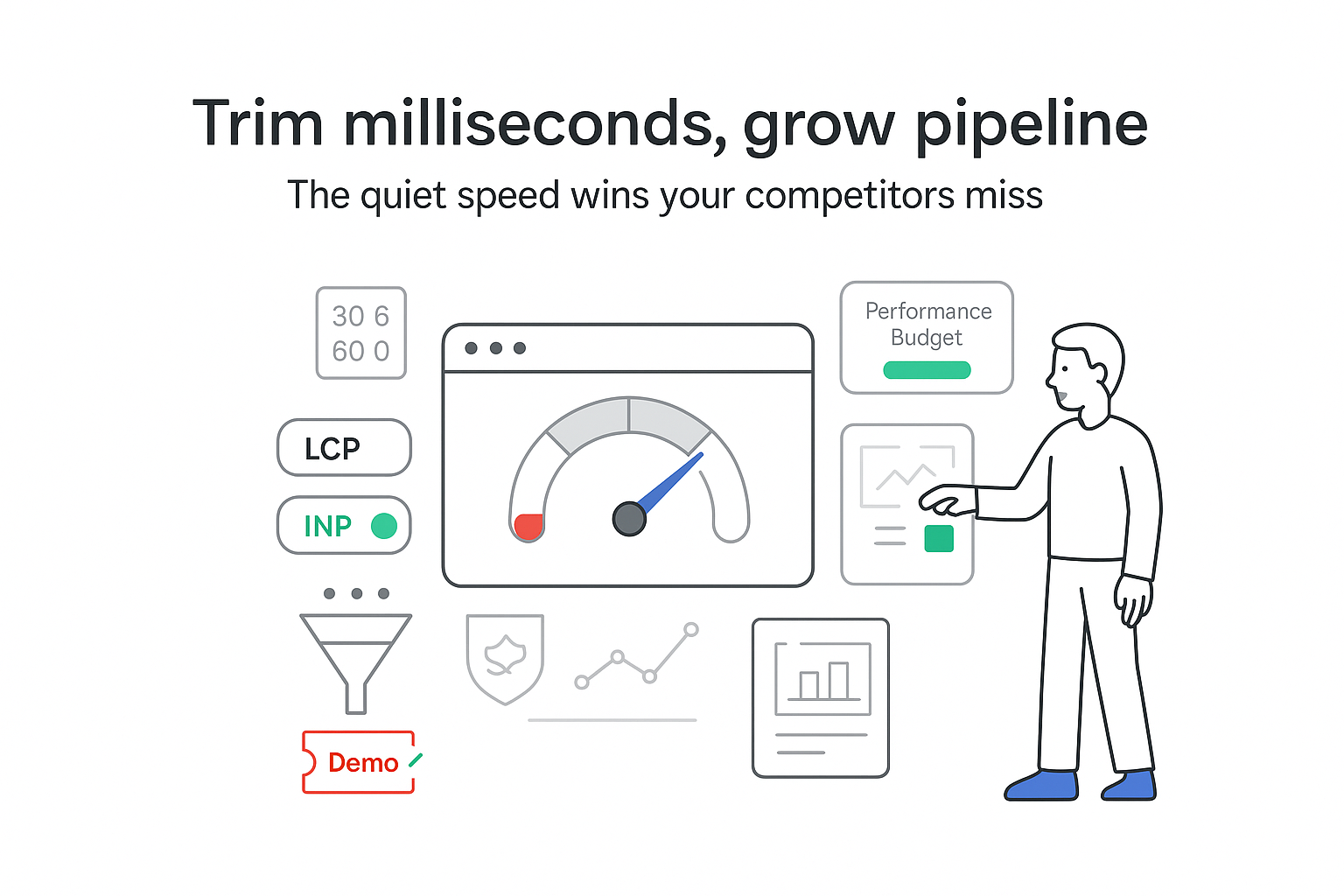
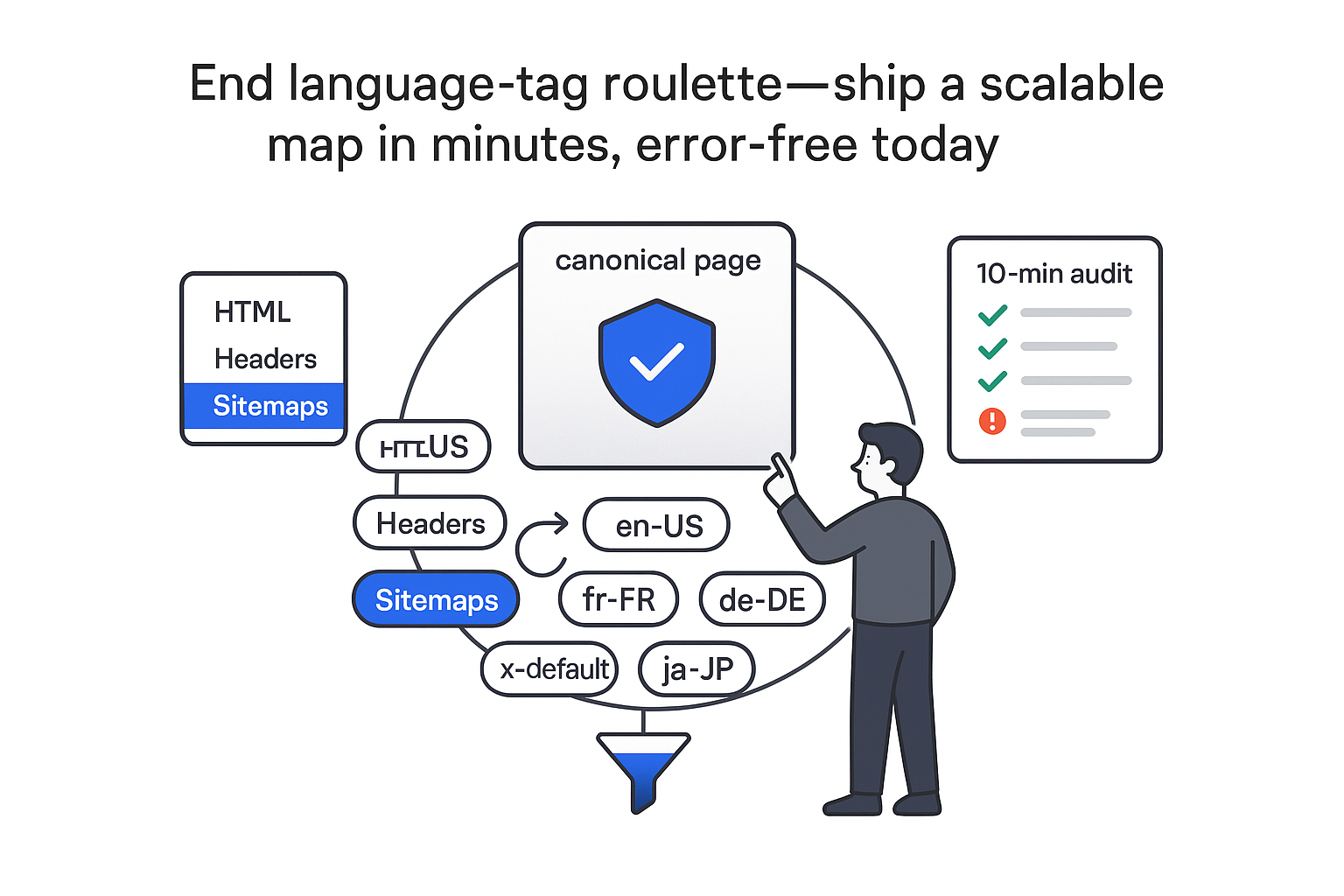
.svg)